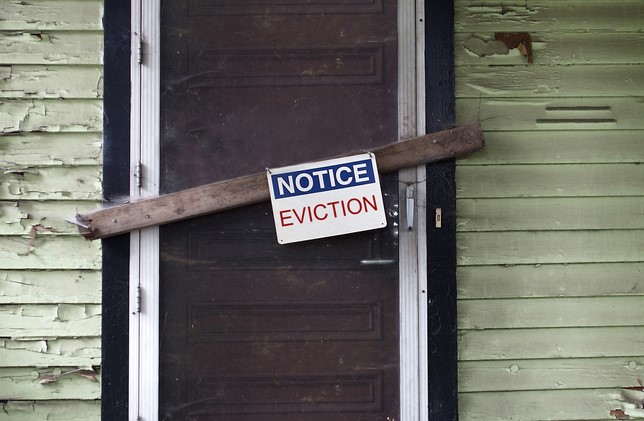If you have had to Google this subject, chances are things are not good with your rental property and you could do with some sound tips on the next steps. So, to aid you with this, we have been out there and gathered some facts that will hopefully point you in the right direction and help get the ball rolling. We would like to stress that we are not legal professionals in any way shape or form but have taken the low down from various sources to put together a useful guide to help you navigate the process. This is a summary of what you need to do, but of course legal guidance is 100% recommended.
There can be various reasons why a landlord or agent may feel the need to evict a tenant but the usual scenarios are;
- A tenant has fallen into rent arrears.
- They are causing great undue stress to the landlord through unexpected behaviours – such as damaging the property, making unreasonable demands or antisocial behaviour.
- Another common reason is that a landlord just needs to regain possession for personal or financial reasons.
If you are at this point and have decided that eviction is the only option, then you will need to know the following steps to take, assuming the tenant is on an Assured Short-Hold Tenancy (AST). To avoid the eviction failing or being accused of harassment it is fully advised to consult a solicitor.
After landlords making a claim in court, on average it takes 118 days for the appointed bailiffs to remove tenants
How to evict my tenants in 4 easy steps:
Step 1.
Notices to serve.
If your tenant is on an AST, whether fixed term or periodic (periodic: month by month and no written contract) you can serve a Section 21 notice. No reason is needed to issue this notice, but 2 months’ notice must be given and it cannot be served in the first 4 months of a tenancy. Other reasons may be; The fixed term has not ended, the property is an HMO without a license, the council has served improvement or emergency notices in the last 6 months, the tenancy started after April 2007 and you have not protected the deposit in a scheme, a Section 8 notice should be served if your tenant has broken the terms of their tenancy agreement. This can be issued at any time during the tenancy and there must be a legal reason.
Further information can be found at: https://www.gov.uk/evicting-tenants/section-21-andsection-8-notices
Before Issuing a Section 21
You must have provided your tenants with 3 important documents, listed below at the start of their tenancy.
If you haven’t provided the tenant with these 3 documents, the Section 21 could be invalid and get overturned in court;
- An Energy Performance Certificate (EPC)
- A current gas safety record
- The Governments ‘How To Rent Guide’ found here: https://www.gov.uk/government/publications/how-to-rent
In an ideal world the tenant will now leave the property on the specified date given in the notice. However, as we know, it’s not an ideal world and these things don’t always go to plan, so…
Step 2.
Make a possession order.
Once the correct notice has been served, which notifies that you intend to regain possession, you should either use an:
Accelerated Possession Order – this can be used if you do not wish to claim any rent arrears, have a written contract and have issued a Section 21. Accelerated possession orders currently cost £355 and the forms to be posted to a court near you can be found here: https://www.gov.uk/evicting-tenants/accelerated-possession-orders
or a:
Standard Possession Order – if you issued a Section 8 or 21 and wish to claim rent arrears. Standard possession orders currently cost £325 and can be done online here; https://www.gov.uk/possession-claim-online-recover-property
Step 3.
The court – a hearing or an order.
After making your possession orders; the court and judge will decide if they want a hearing or if they are going to make an order. There are a number of outcomes to both of these which will be explained to you once you are at this stage of the process and more info can be found on gov.uk
Step 4.
Warrant of possession.
If the court has now issued an order for the tenant to leave and they still do not leave on the given date, a torrent of angst, blood, sweat and tears are bound to hit you at this point…Aaaaahhh (it’s ok to scream!).
Now you can ask the court for a Warrant of Possession and this currently costs £121. Forms can be found here: https://www.gov.uk/government/publications/form-n325-request-for-warrant-for-possession-of-land. The court will then issue an eviction notice. If they still don’t leave you can apply for a Warrant of Possession for a bailiff to evict them.
All-in-all, it’s a process we all want to avoid, however, if you find yourself needing to follow these steps, make sure you are prepared and have dotted the I’s and crossed the T’s to the very last letter. The whole eviction process can take between 6 and 9 months and can be costly, so ensure you take thorough, proper legal advice. Full advice can be found on various websites such as gov.uk, the National Landlords Association and Citizens Advice.
To keep the best possible relationship with your tenants and to ensure you have all the evidence you might need regarding damages and legal requirements for your property, speak to us today about check in, check out and inventory reports, mid-term assessments and property health checks.
To find our more about how having the right paperwork can help you, take a look at our blog on the subject https://www.eclipseinventories.co.uk/news/why-do-i-need-to-use-an-inventory-company/
And for more useful tips, hints and news on all things ‘lettings’ related, follow us on Facebook and LinkedIn for regular updates and information.



